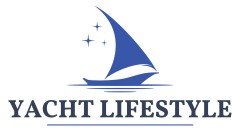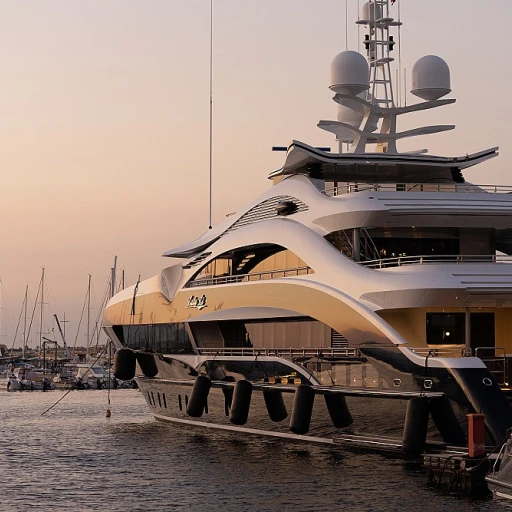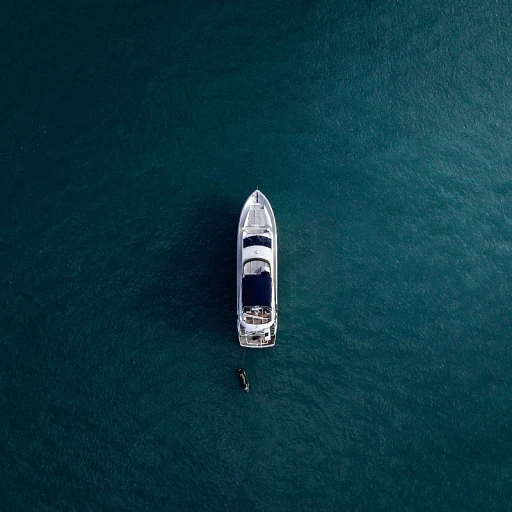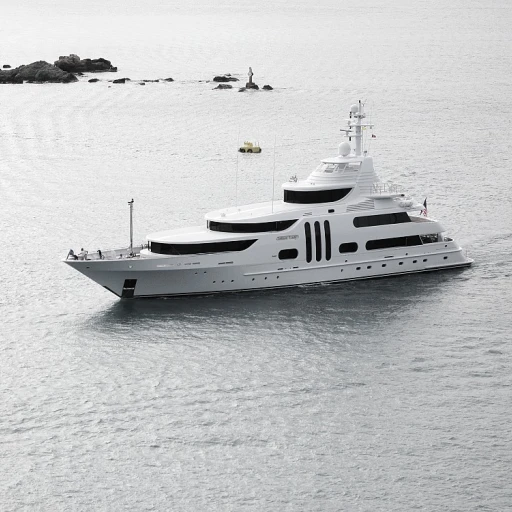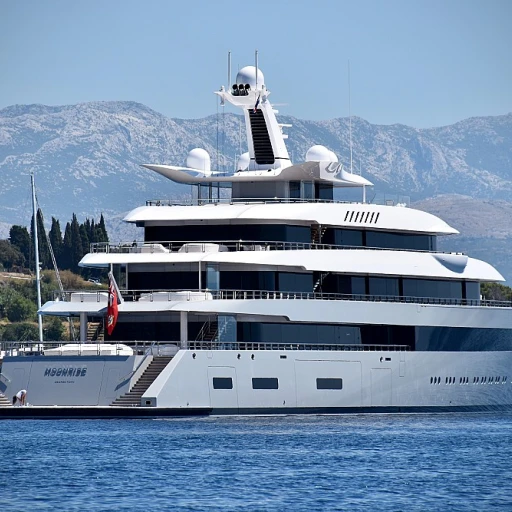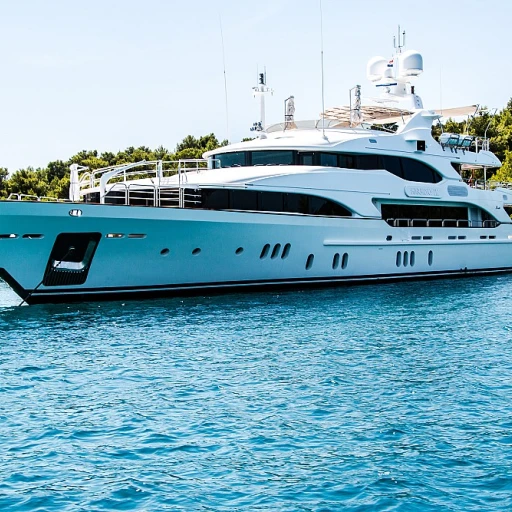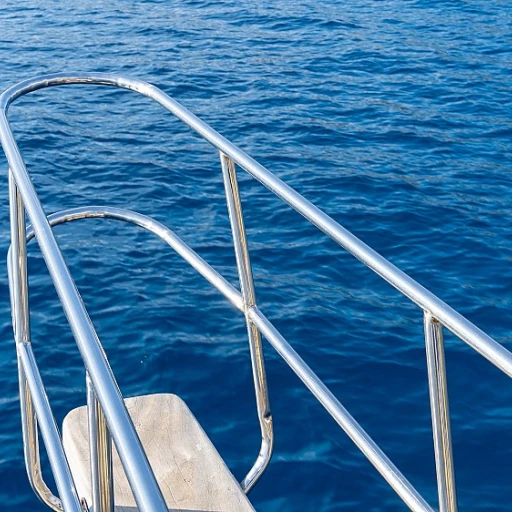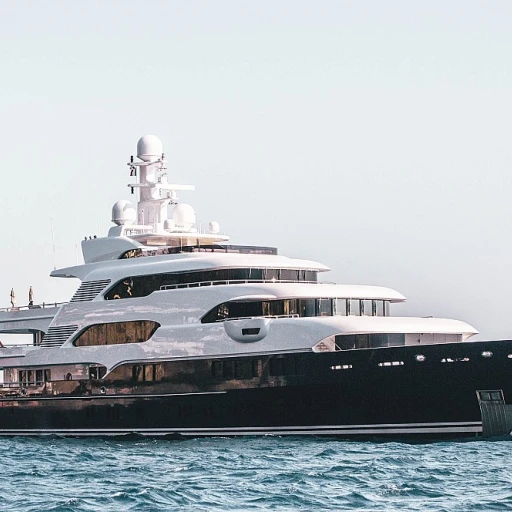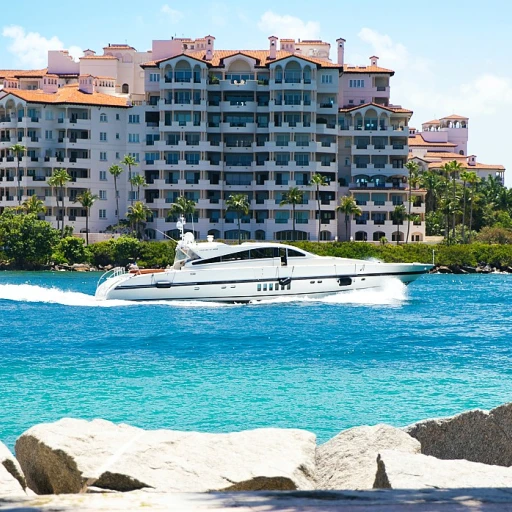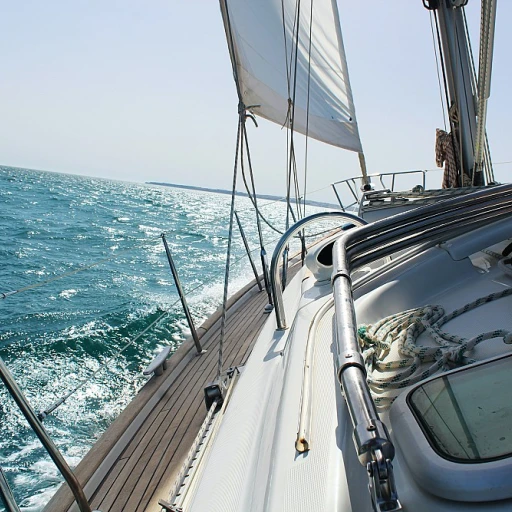
Understanding the Importance of a Reliable Anchor Mount
The Backbone of a Secure Moorage
In the intricate world of yacht cruising, having a reliable anchor mount is non-negotiable. Responsible for keeping your vessel secure, a dependable mount can make the difference between a peaceful stay and an unexpected drift. Picture your yacht anchored, its deck mount holding steady even in the toughest currents. To achieve this, it's essential to invest in quality products and pay close attention to the materials and technology behind these crucial components.
Today's boating enthusiasts have multiple options to choose from when it comes to mounts and systems. Whether you prefer a traditional anchor system or a quick-release option, the mounting method you select can greatly enhance your experience. As you shop for the ideal solution, don't just focus on the price. Look at the detailed features, such as how the mount allows for easy adjustments and provides stability on different parts of the vessel—from the motor mount to the ball anchor systems.
It's not merely about finding a product but selecting one that integrates seamlessly with your yacht's specifications. Customer reviews and professional write-ups provide insight into how these mounts perform under various conditions. The mounting system you choose should be aligned with your vessel's specific needs, be it a rail mount or a more sophisticated pin release system.
Assessing customer service quality is also crucial. When issues or questions arise, being able to quickly call customer support can be invaluable. Those who have navigated similar choices know that knowledgeable guidance can significantly impact your satisfaction with a purchase.
Types of Anchor Mounts and Their Applications
Exploring Various Anchor Mounting Solutions for Your Yacht
Choosing the best mount system for your yacht takes a bit of research. The market offers a variety of options that cater to different needs and vessel types. Here's a look at the main categories and their typical applications:- Deck and Rail Mounts: These are widely used as they allow for easy access and quick release of the anchor. A rail mount allows you to secure the anchor conveniently along the side of the boat, ensuring that it stays in place even in rough waters. With professionals often recommending deck mount systems, you get additional flexibility and security.
- Motor Mount Options: Ideal for those using a heavier anchor or operating in deeper waters, motor mounts provide the necessary strength and operational efficiency. These mounts typically come with a mechanical or electric system for lowering and retrieving the anchor, making the process swift and reliable.
- Pin System and Ball Mounts: Known for their affordability, these systems include a pin and ball configuration that simplifies the mounting process. Their low price does not compromise on performance, making them ideal for smaller vessels.
- Advanced Quick Release Systems: For those who prioritize speed and ease of use, quick release systems provide a state-of-the-art solution. These mounts are favored for their efficiency in emergency situations allowing for the anchor to be deployed swiftly to avoid collisions or groundings.
Material Considerations for Anchor Mounts
Choosing the Right Material for Durability and Performance
Selecting the ideal material for your yacht's anchor mount is crucial for ensuring both durability and optimal performance. The choice of material significantly affects the mount's ability to handle the stresses of securing and releasing your anchor system efficiently.- Stainless Steel: Known for its corrosion resistance and strength, stainless steel is a popular choice for anchor mounts. It's particularly well-suited for boats frequently operating in saltwater environments, where corrosion can be a significant issue.
- Aluminum: Lightweight yet robust, aluminum mounts offer an excellent balance between weight and durability. They are a great option for reducing the overall weight on your deck, especially in larger boat setups where every pound counts.
- Plastic and Composite Materials: Offering a low-cost alternative, these materials can be suitable for smaller boats or as part of a quick release system. However, they often lack the strength and longevity of metal variants.
Installation Tips for Optimal Performance
Installing Your Anchor Mount for Best Results
When it comes to outfitting your yacht with a dependable anchor system, the installation process is crucial for performance and safety. An improperly installed anchor mount can lead to disastrous outcomes, especially when weather conditions are less than favorable. To ensure optimal results, here are some important considerations:
- Positioning: The placement of your anchor mount will heavily influence its effectiveness. Ensure that the mount is positioned at the bow of your boat for stability. Additionally, the mount should align with the centerline to distribute the force evenly.
- Mount Types and Surface Compatibility: Different types of mounts, like rail mounts and deck mounts, require specific surfaces for installation. Verify the compatibility of the mount with the existing setup on your yacht. This might involve considering the type of motor mount or deck configuration.
- Secure Fastening: Utilize stainless steel pins and bolts for fastening, providing a corrosion-resistant and strong hold. Make sure to tighten the hardware snugly but avoid over-tightening to prevent damage to both the mount and your boat.
- Use of Quick Release Systems: If your mount includes a quick release system, ensure it operates smoothly and doesn’t compromise the stability of the anchor. Regular inspection will help maintain its function.
- Consult Product Reviews and Customer Service: Before finalizing the installation system, a thorough review of the product details and customer feedback can provide insight into common issues and solutions. Don’t hesitate to call customer service for specific queries about your chosen model.
By adhering to these guidelines, your anchor mount will deliver reliable performance, contributing to a safe and enjoyable yachting experience. Investing time in this crucial phase can save both time and resources in the long run, ensuring that your sailing adventures remain trouble-free.
Maintenance Practices for Longevity
Essential Practices to Ensure Anchor Mount Longevity
Proper maintenance of your anchor system is crucial to keep your yacht experience seamless and worry-free. Whether you're utilizing a motor mount or a traditional anchor setup, implementing a regimen of care can significantly enhance the lifespan and performance of your anchor mounts.
1. Regular Inspection and Testing
Conduct routine inspections of your anchor mount and all related components such as the release system and rail connections. Look out for signs of wear and tear, rust, or any loose fittings that could compromise the integrity of your setup. It's advisable to test the quick release system periodically to ensure the anchor deploys and retracts smoothly. This practice not only guarantees safety but also ensures your anchor is ready when you need it most.
2. Cleaning and Environmental Considerations
Saltwater is notorious for causing corrosion, so regularly rinse your mount and anchor with fresh water after each use. Pay particular attention to areas where the mount ball and its pins meet, as these are critical points in the mounting system. This will help to prevent the buildup of salt and other deposits that can degrade the metal over time.
3. Component Lubrication
Applying a thin layer of protective lubricant to moving parts such as the motor mount and pins will facilitate smooth operations and reduce friction-related wear. High-quality marine-grade lubricants are recommended to withstand the harsh maritime environment.
4. Timely Replacement of Tarnished Parts
As tempting as it might be to delay upgrades or replacements due to price, prioritizing the condition of your anchor setup is crucial. For instance, if the pin or deck mount shows significant deterioration, it is wise to shop for quality products from reputable suppliers. Checking customer reviews can be a helpful guide in assessing the reliability and performance of new components.
5. Expert Consultation
If unsure about any aspect of your anchor mount's condition, do not hesitate to call customer service or consult with professionals who can provide you with credible advice and quality assurance. They can offer valuable insights into product details that are aligned with your specific yacht requirements.
Adhering to these maintenance practices not only ensures the longevity of the anchor mount but also enriches your boating experience, providing peace of mind out at sea. Remember, a well-maintained system is your best assurance against unforeseen maritime challenges.
Innovations and Trends in Anchor Mount Technology
Pioneering Progressions in Anchor Mount Systems
As the yacht world continually embraces innovative technology, the realm of anchor mounting systems is no exception. Recent advancements cater to enhancing efficiency and ensure the ultimate in reliability. Customers are increasingly voicing their opinions through customer reviews, driving industry specialists to perfect their offerings.- Quick Release Systems: These systems are designed to expedite the anchoring process, which is crucial when navigating fluctuating ocean conditions. Integrating a quick release system allows yacht owners to deploy or retrieve their anchors swiftly, minimizing potential hazards.
- Enhanced Materials: Efforts continue to be made in using low-priced, high-grade materials that promise durability and resilience. Engineering synthetic composites alongside traditional metals produces lightweight yet sturdy anchor proposals, which are essential for maintaining maneuverability without compromising on strength.
- Adaptability and Customization: Anchor solutions have increasingly focused on maximizing compatibility across varied boat models. Motor mounts now facilitate seamless installation on rail and deck settings, accommodating different designs while ensuring the utmost efficiency when adjusting the pin and ball systems.
